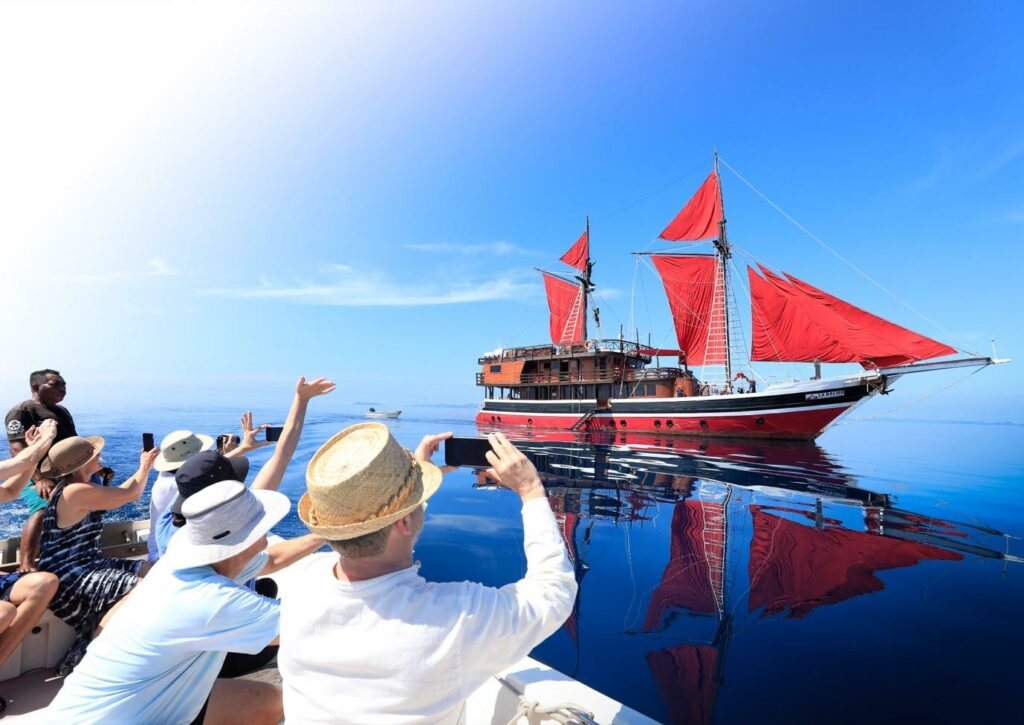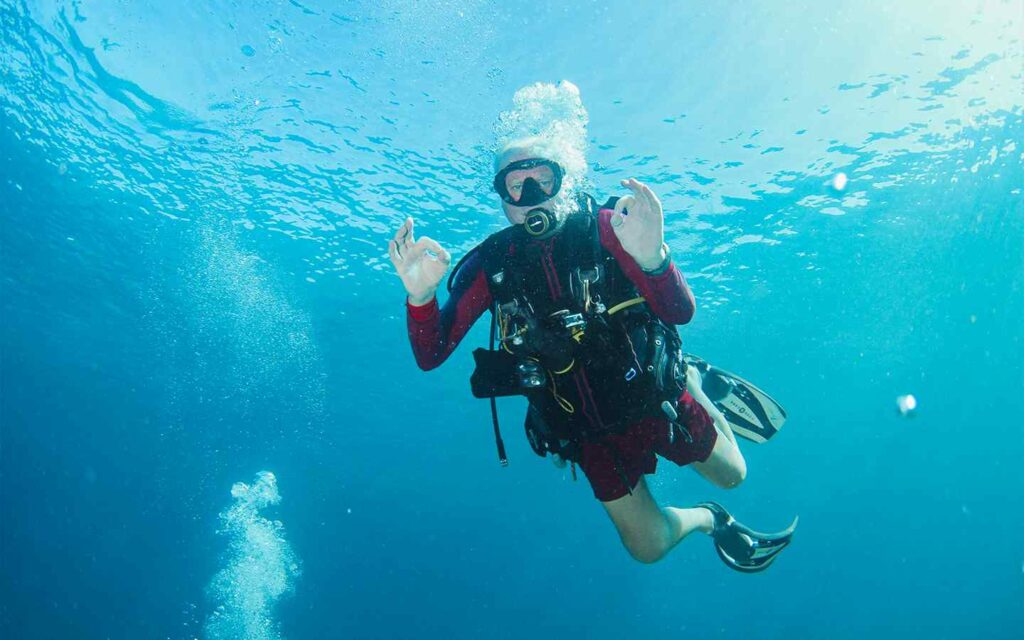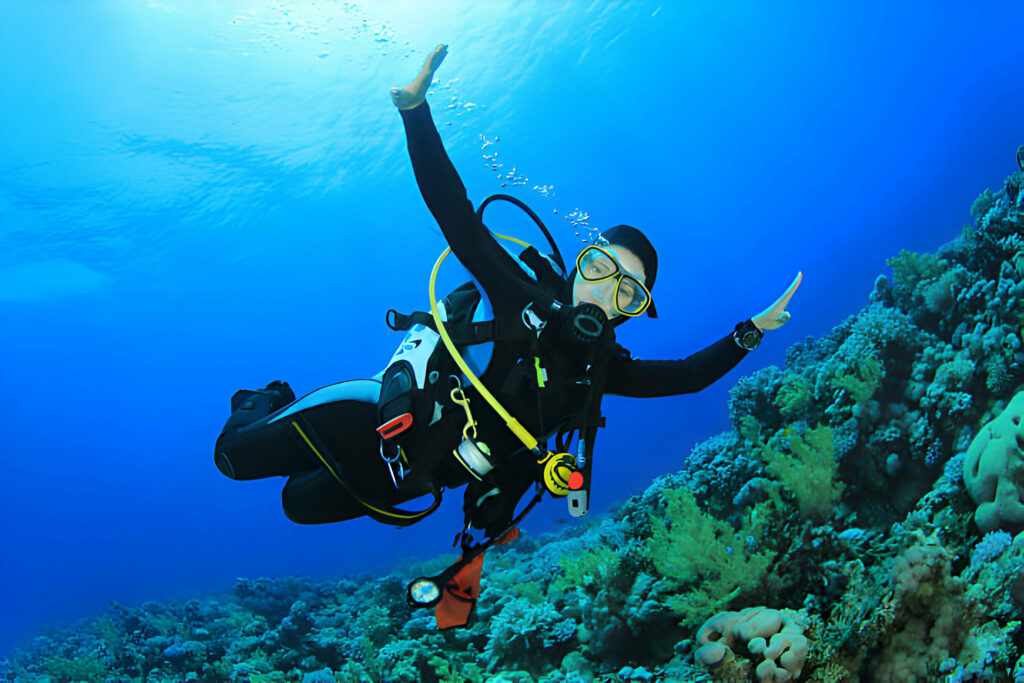What is Decompression Diving? Purpose, Plan, The Best Deco Dive Computer
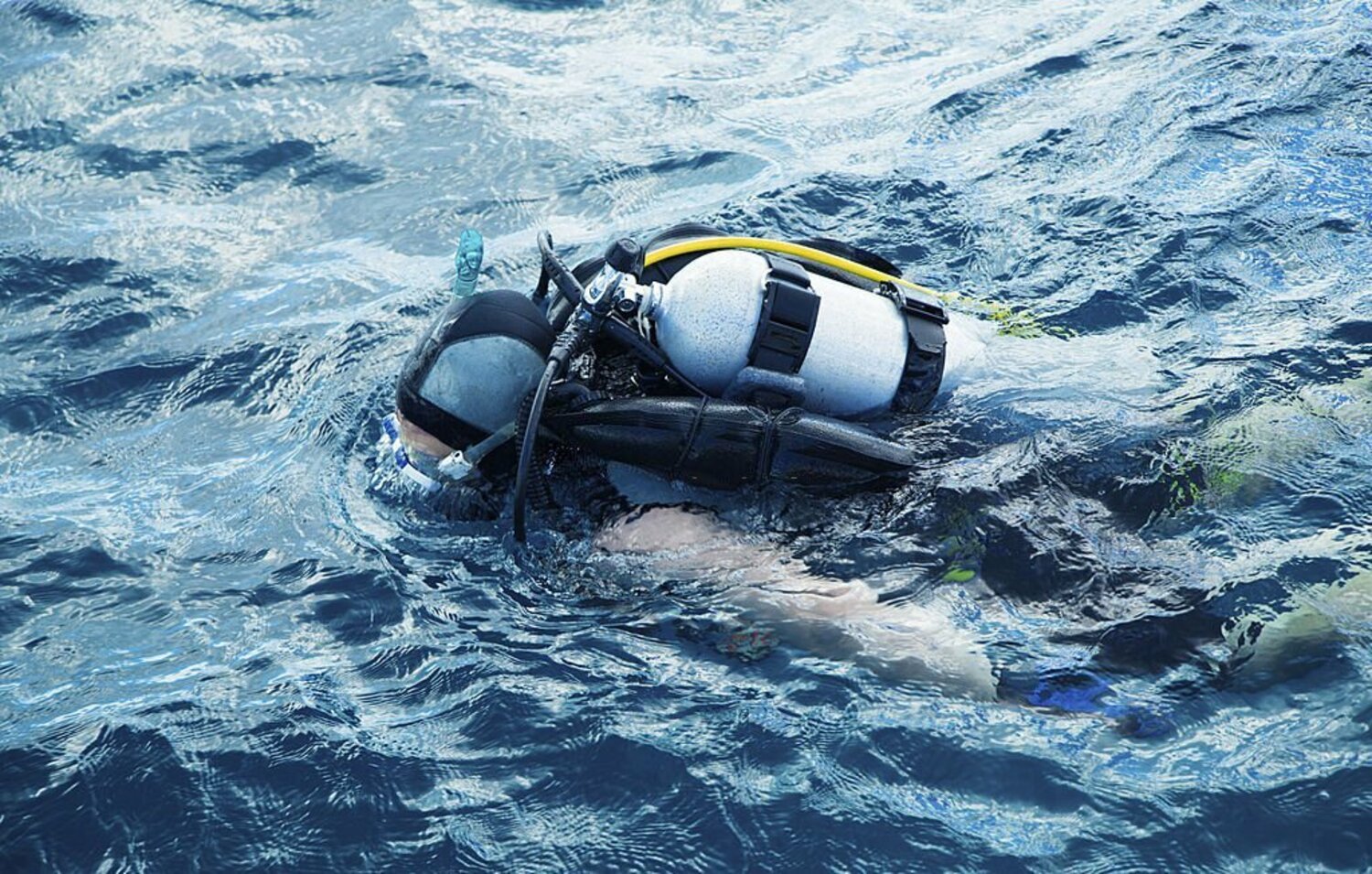
Decompression diving is when a diver must make one or more stops during their ascent to allow their body time to safely release the nitrogen (or other gas, such as helium) that dissolved into their tissues during the dive.
Nitrogen dissolves into your body tissues as you descend through water under pressure. The deeper you dive, the faster the gas dissolves into your tissues. When you ascend, nitrogen dissolves from your tissues into your lungs and exits the body via normal breathing.
Offgassing is a term for this. If the amount of dissolved gas remains within certain limits, you can ascend to the surface without stopping, though a safety stop is standard recommended practice. This is referred to as “no stop” or “no decompression” diving. Standard recreational diving is always planned as no-stop diving, but you make a safety stop at 5 metres (15 feet) for 3 to 5 minutes as a conservative practice to further reduce risk.
When you exceed the no-stop time limits set by your dive computer, you enter “decompression dive” territory. This means you can’t swim directly to the surface without risking getting the bends. You must now ascend in stages, stopping progressively shallower and longer to allow dissolved gas to leave your tissues.
In recreational diving, a dive with a required decompression stop is considered an emergency situation caused by accidentally exceeding a no stop limit or being forced to do so by circumstances (which should be extremely rare). Dives with required decompression may be planned in commercial, tec, scientific, and military diving. This type of diving necessitates additional training and specialised gear.
Almost all dive liveaboards in the world have strict no decompression diving policies. Decompression diving is a risky business, and dive liveaboards often operate in areas where help from doctors or decompression chambers is very far away. Dive liveaboards operate within recreational diving limits.
What is the purpose of deco diving?
When there is no other reasonable way to complete the dive, decompression diving is appropriate. This is most often due to depth, as no-stop time limits become extremely short below 30 metres (100 feet). However, long shallow dives may necessitate decompression. A two-hour cave exploration dive may not be deeper than 18 metres (60 feet) to 30 metres (100 feet), but it is far beyond the no-stop limits. Commercial divers may also perform a shallow decompression dive simply because it is more time and cost effective to complete a task with a single deco dive rather than multiple no stop dives.
When planning a decompression dive, how do you determine decompression stops?
Depending on the depth, duration, and equipment used, planning a decompression dive can take as little as a few hours or as long as several days as the team considers and investigates alternatives and options.
Decompression dives are usually planned using software and/or a dive computer in tec diving and much scientific diving. Decompression dives typically use a variety of breathing gas mixtures that are chosen based on the dive depth and duration. Today, computers are used to determine and plan the best gases and dive schedules, as well as emergency alternatives to handle reasonably possible problem situations, in order to best consider all of these variables.
On longer dives, trimix (helium/nitrogen/oxygen) is used to reduce gas narcosis to acceptable levels. During decompression, enriched air, nitrox, and pure oxygen are used because they speed up the rate at which dissolved gas exits the body. During ascent, the diver alternates between these or, if using a closed circuit rebreather, changes the gas ratios. Each gas mix has a limit on how deep and how shallow it can be safely breathed, and decompression time increases disproportionately with depth, so that for dives deeper than 200 feet, decompression time is frequently longer than the time spent at depth. As a result, the dive plan must include how much of each gas is required, where and when it will be used, backup gas and equipment for emergencies, and how much of all of this the diver can reasonably manage.
How deep can you go before needing to decompress?
In practice, you can do no-stop dives to 40 metres (130 feet). While it is theoretically possible to go deeper and still stay within no stop limits, the no stop times are so short that “well within” limits is essentially impossible.
Are diving decompression tables and recreational dive tables the same?
Decompression dive tables differ from recreational dive tables in that they list times, depths, durations, and required stops that go far beyond the exposures experienced by recreational divers. While commercial and military divers frequently use tables, tech divers primarily use dive computers for decompression dive planning and execution.
What happens if you don't decompress properly after diving?
If you exceed a no-stop limit and do not make the required stop or stops, your risk of decompression sickness is considered unacceptable. How bad is it? That depends. Because people differ in their physiologies and susceptibility, any dive carries some risk of decompression sickness. Even within its limits, no computer or table can guarantee that decompression sickness will not occur.
What is the best deco dive computer?
Select a technical decompression dive computer. It should be able to use a variety of gas mixtures on the same dive. Fortunately, these are not difficult to come by – just ask your Instructor or a Dive Center or Resort for help.
This type of diving requires not one, but two compatible dive computers. While dive computers are extremely reliable, you don’t want to be stranded without your decompression information if one fails, so it’s standard practice to dive with two, staying within the limits of the most conservative (even identical computers will vary slightly throughout a dive).
What should I do if my dive computer displays “deco,” but I didn’t intend to do a decompression dive? What if I miss the stop?
Assuming this occurs by chance during a no-stop recreational dive, ascend to 5 metres (15 feet) (or deeper if your computer specifies) and stay there until it “clears,” indicating that you have stayed the required stop time. The time is displayed on most computers as it counts down. A recreational “oops” situation would typically be brief, requiring only one stop.
However, if you are low on air, do not go underwater. Stay as long as possible, but if you don’t have enough air to perform the stop (or if you miss it entirely), surface with enough air to ascend at a proper rate and exit the water. Then, remain calm, notify the divemaster and your buddy, breathe oxygen if available, and keep an eye out for DCS signs and symptoms. Do not dive for at least 24 hours, or for as long as your computer specifies. Contact the Divers Alert Network and seek emergency medical attention if you have or suspect you have DCS.
ALSO READ : Dive Log Books: Why do You Need a Dive Log
Enjoy a Diving Trip in Raja Ampat and Komodo with La Galigo Liveaboard
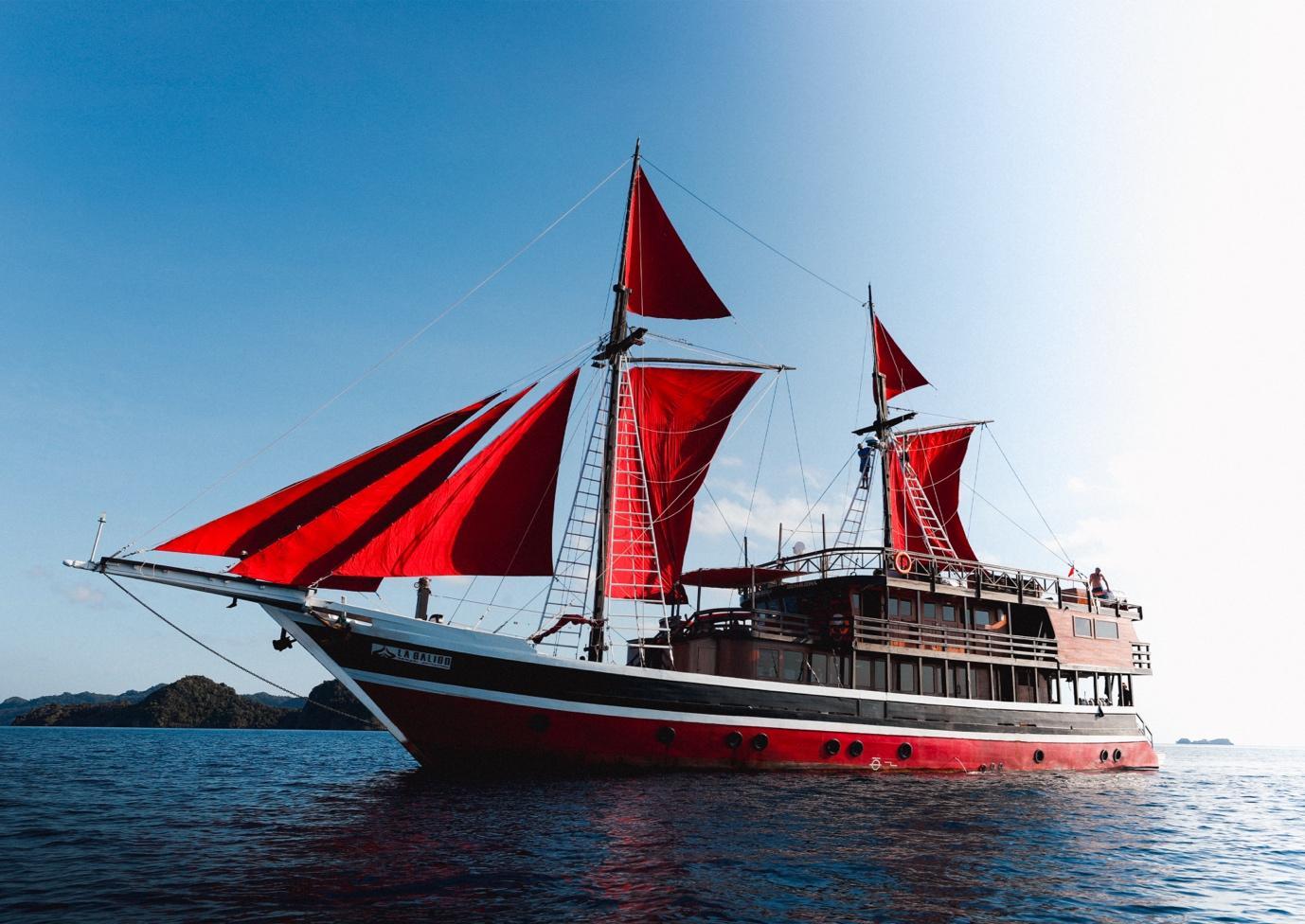
La Galigo is known as one of the best liveaboard diving boats in Raja Ampat Indonesia, and it offers trips to well-known diving destinations such as Komodo and Raja Ampat. The Coral Triangle is located in Indonesia, which has the highest marine biodiversity on the planet.
La Galigo Liveaboard Diving was founded in 2015 by two avid divers who wanted to explore some of Indonesia’s pristine reefs but found that all existing scuba diving options were frequently out of their budget, and wanted to provide an affordable option for everyone to be able to explore these beautiful places.
La Galigo Liveaboard Diving in Raja Ampat & Komodo is a friends and family affair, and our liveaboard diving trips are always focused on fun, safety, guest comfortability, and are exceptional value for money. Our trip prices range from $2,160 for a six-day Komodo liveaboard diving trip to $3,375 for an eight-day Raja Ampat liveaboard diving trip. The price includes four meals a day, diving three to four times a day or snorkelling, and land tours.

